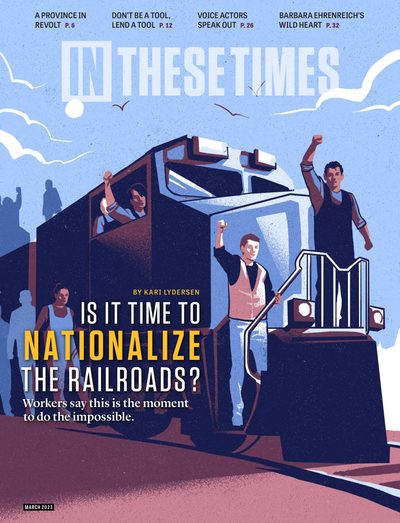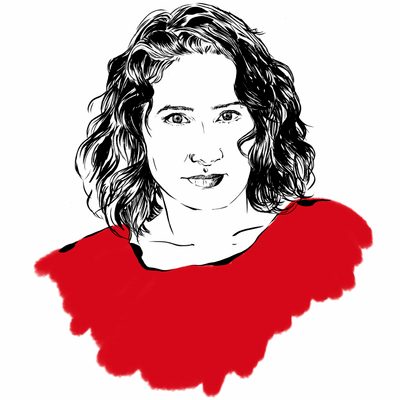The Hard Head and Wild Heart of Barbara Ehrenreich
Revisiting Nickel and Dimed, Dancing in the Streets, and many more of the late author’s groundbreaking books.
Sarah Jaffe
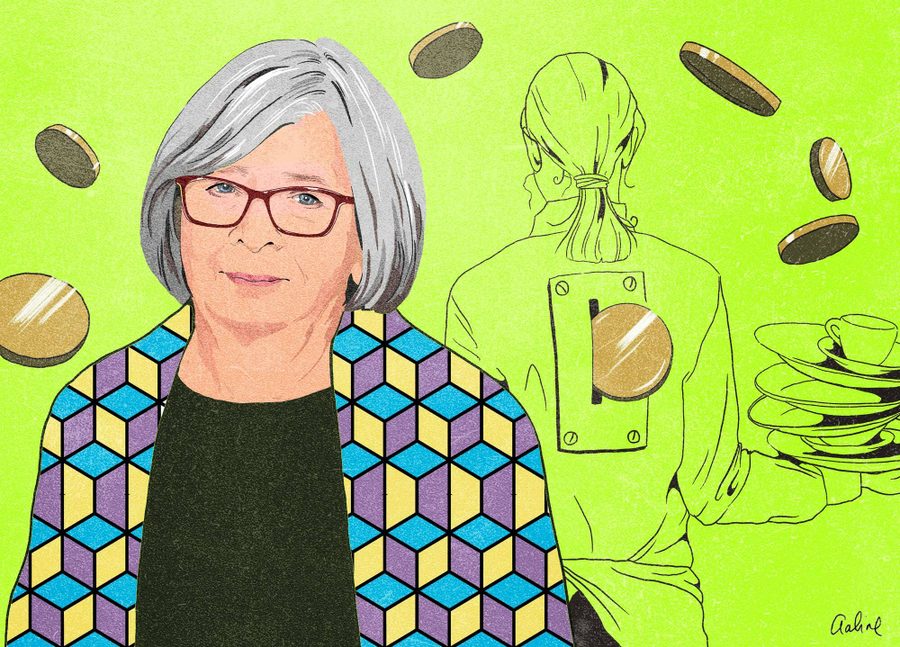
I began to reread Barbara Ehrenreich’s Nickel and Dimed (2001) after a particularly intense restaurant-work stress dream I had in October 2022. The book is widely considered Ehrenreich’s masterpiece, and it certainly did not help with my nearly 20-year-old service-work flashbacks. The whirl of sweat, grease and angry customers on a busy restaurant shift, and the empty pockets and make-work of a slow one, continue to haunt me. Nickel and Dimed captures the stress of the industry perfectly.
For those who have not read the book (it is, after all, 20 years old), it is the record of Ehrenreich’s attempt to live on the kinds of jobs a woman might be able to get after being kicked off welfare by the 1996 Clinton-Gingrich Personal Responsibility and Work Opportunity Reconciliation Act. The book traces three attempts, in three different states, before Ehrenreich gives up. It serves up vivid characters and even more vivid descriptions of Ehrenreich’s own pain, frustration and descent into pettiness.
Ehrenreich notes that, despite having plenty of a certain kind of social capital at the time she entered the low-wage workforce, she struggled at all of these jobs and learned a lot doing them. She did not particularly like the person that she became while scrambling to make ends meet, someone “meaner and slyer … more cherishing of grudges.” After a coworker chastised her for (possibly) miscategorizing a shirt at the end of a trying nine-hour shift, Ehrenreich fantasized about the coworker falling off a ladder: “I peer around from where I’m working in Jordache, hoping to see her go splat.” But Ehrenreich also found a certain kind of pride in moments of success, like the time she managed to work through a meal at a nursing home largely on her own.
Ehrenreich’s unsuccessful attempts to organize coworkers provide some of the book’s most poignant moments. In one, she attempts a strike after a coworker at a maid service — a gig-economy forerunner company whose vans still crisscross American cities — is injured. “I say, ‘I’m not working if you don’t get help. Or at least sit down with your foot up while we do your work. … This is a work stoppage. Ever hear of that? This is a strike.’” The coworker, though, insists on finishing her shift on one leg. Later, at a Walmart, when another “associate” (Walmart’s term) finds she can’t afford a marked-down shirt even with the employee discount, Ehrenreich declares, “‘You know what we need here? … We need a union.’ There it is, the word is out. Maybe if I hadn’t been feeling so footsore I wouldn’t have said it, and I probably wouldn’t have said it either if we were allowed to say ‘hell’ and ‘damn’ now and then or, better yet, ‘shit.’ But no one has outright banned the word union and right now it’s the most potent couple of syllables at hand.”
Ehrenreich plays her moments of class outrage mostly for laughs. “Do the owners have any idea of the misery that goes into rendering their homes motel-perfect?” she acerbically asks. “Would they be bothered if they did know, or would they take a sadistic pride in what they have purchased — boasting to dinner guests, for example, that their floors are cleaned only with the purest of fresh human tears?”
But in the closing lines, Ehrenreich turns squarely on her (perceived middle-class) reader: “When someone works for less pay than she can live on — when, for example, she goes hungry so that you can eat more cheaply and conveniently — then she has made a great sacrifice for you, she has made you a gift of some part of her abilities, her health, and her life.”
At the time Ehrenreich wrote Nickel and Dimed, and for decades before and after, she was a voice in the dark. When so many of her generation had abandoned the struggle for even slight political improvement, let alone social transformation, Ehrenreich stuck with the fight. Through the 1980s and 1990s, as neoliberalism consolidated its chokehold on global politics, Ehrenreich was there, haunting the pages of the papers and magazines of record with the rough truths few wanted to read. Her death in September 2022, at age 81, came in a polarized world she had seen coming when many of her contemporaries were still drinking the Kool-Aid of Clintonism.
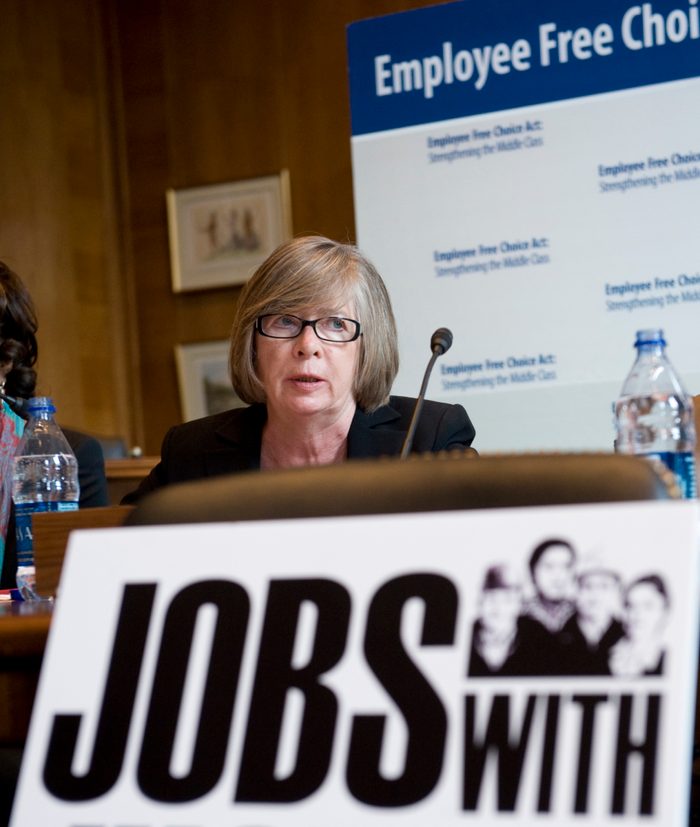
Ehrenreich was born in Butte, Mont., in 1941. Her father was a copper miner whose own upward mobility enabled hers, but a deep pride in those mining roots never left her, and he and her mother encouraged her in the habits of mind that led to writing. She studied science in university, completing a Ph.D. in molecular biology, but she got swept up in movements while studying — antiwar, socialist, feminist — and turned from the lab to a different kind of research, the kind that would support organizing and struggle. She fell in love, she writes in 2014’s Living with a Wild God, “with my comrades, my children, my species.” She wrote a widely read primer on socialist feminism in 1976 (“You are a woman in a capitalist society. You get pissed off.”) and then ventured into journalism, penning some of her first public-facing essays in In These Times in the late 1970s. By the 1980s, Ehrenreich was founding co-chair of the Democratic Socialists of America, and her byline was everywhere.
It did not surprise me to learn Ehrenreich’s career training had not been in journalism but biology. There is something of the scientist about her best works, even when satirical; she puts late capitalist society under the microscope to render it both strange and visible. The way she observed the United States, in particular, evokes a feeling of being both outside and embedded at once.
And so the right way to remember Ehrenreich seems to me to be engaging once again with that work, from a career that spanned more than 20 books written or co-written, along with countless essays, articles and columns (and even a novel).
Had I Known, Ehrenreich’s career-spanning collection published in 2020, is a good place for a reader new to her work to start. It contains the essays that became Nickel and Dimed and her 2009 evisceration of American forced optimism, Bright-sided, as well as other classics, under the headings “Haves and Have-Nots,” “Health,” “Men,” “Women,” “God, Science, and Joy” and my favorite (and the last), “Bourgeois Blunders.” These pieces are both a fair sampling of her work and wholly insufficient.
In the breadth of her interests as well as her gimlet eye, Ehrenreich embodied a certain principle of Marx more fully than any writer or activist I’ve ever known or read: “ruthless criticism of all that exists, ruthless both in the sense of not being afraid of the results it arrives at and in the sense of being just as little afraid of conflict with the powers that be.” She took up the unpopular cause of working-class women in the wake of welfare reform in Nickel and Dimed, criticized the professional middle class at the height of its power in Fear of Falling (1989), challenged the unfailing belief in positive thinking in the midst of a global economic crisis in Bright-sided (2009) and called for collective joy at a time when the pleasures we were offered were resolutely individual (or family) in Dancing in the Streets (2007).
She unfailingly brought a feminist lens to her work, even when her topic was something like “Men” or “War.” That materialist feminism gave her a contrary view of power structures without slipping into contrarianism, that most masculine of vices. Contrarianism, after all, is a pose of intellectual rigor plastered over a defense of hierarchies, and Ehrenreich was always on the side of puncturing facades and leveling hierarchies— from her writing (with Deirdre English) about witch hunts as an attack on women’s empirical healing knowledge, to her critique of organized religion in Living with a Wild God. In an interview for In These Times, she told me, “The notion of a good god becomes a way of legitimizing human authority.”
In her first book with English, Witches, Midwives & Nurses (1972), you can find a critique of professionalization that would later crystallize into her theory of the professional middle class: “Expertise is something to work for and to share; professionalism is — by definition — elitist and exclusive, sexist, racist, and classist.”
That urge to democratize and share knowledge — Ehrenreich’s disinclination to simply believe (even in science), her drive to know for herself — appears in her sharp critiques of medical practice in Bright-sided and Natural Causes (2018). In the former, she requested to see her cancer with her own eyes, under the microscope. In the latter, she cited a male doctor’s condescending treatment of her during a gynecological exam while pregnant as “the moment I became a feminist in the fullest sense” — when he refused to explain to her what was happening in her own body.
Ehrenreich’s roots in what we now call second-wave feminism were clear; her challenge to male-dominated sciences was part of a collective movement that began to change medicine’s view of women as inert bodies. In Natural Causes, she asks, “But if what the patient really needs, at least in some cases, is attention and some display of concern, why is the practice of medicine limited to laboratory-trained physicians operating in massively capital-intensive medical institutions?” What many patients need, in other words, is care, not whirlwind visits by a white-coated high priest of the lab — and real care, not the infantilizing teddy bears and perpetual pink of so-called breast cancer awareness. This issue of care, taken up by so many of today’s heirs to Ehrenreich’s socialist-feminist tradition, threads through her books.
She criticized the beast we’ve come to call “Lean In” feminism before the denizens of the New York media had even met Sheryl Sandberg. “American feminism late 1980s style could be defined, cynically, as women’s rush to do the same foolish and benighted things that have traditionally occupied men,” Ehrenreich wrote in a piece in Time in 1990. She reminded us, also in the 1990s, that the decision by high-flying career women to outsource their housework to other women, mostly women of color, was actually a retreat. “The microdefeat of feminism in the household opened a new door for women, only this time it was the servants’ entrance,” she wrote in a piece in the collection Global Woman (2003), which she co-edited with Arlie Hochschild. This attempt to shore up the faltering family on the backs of other women’s work would fail, she knew: There could be no easy “work-life balance” without fundamentally reimagining the nuclear household. It was in such criticisms of the middle class that Ehrenreich really shone, perhaps because — as she often wrote— she had only recently ascended to it.
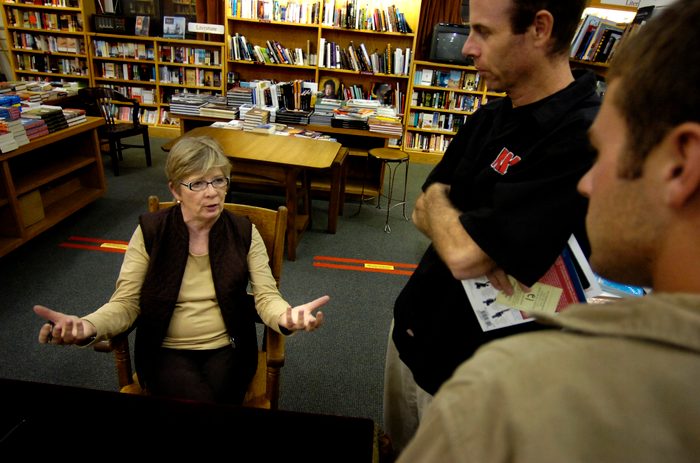
Fear of Falling: The Inner Life of the Middle Class came out during peak frenetic “me decade” excess, the height of Thatcherite “there is no alternative” fervor when capitalism had supposedly conquered socialism for good. The middle class, Ehrenreich wrote, was characterized always by anxiety, by the need to shore up its position through both hard work and, often, exclusion. The book built on a 1977 article she wrote with then-husband John Ehrenreich that theorized what they first called the “professional-managerial class,” or PMC. The PMC was made up of “salaried mental workers who do not own the means of production and whose major function in the social division of labor may be described broadly as the reproduction of capitalist culture and capitalist class relations.” In Fear of Falling, Ehrenreich added, “Historically, the antagonism between the [middle class and the proletariat] is as old as the professional middle class itself, and stems from the fact that one of the purposes of the modern professions was in fact ‘to keep the workers in line.’” Managers explicitly manage workers, of course, but Ehrenreich argued that professionals, from teachers to doctors, produce through their unquestioned authority a trained and healthy working class — one used to deferring.
The shift of the term “professional-managerial class” to “professional middle class,” in Fear of Falling, captured the growing difference between the “professional” and the “managerial.” As Ehrenreich would later explore in Bright-sided, managers — the corporate executive type, anyway — were already pulling away from the rest, becoming something between prosperity gospel preachers and capricious demigods in need of human sacrifice.
When the Ehrenreichs revisited the PMC question in 2012, they noted, “We have to ask whether the notion of a ‘professional-managerial class,’ with its own distinct aspirations and class interests, still makes any sense, if it did in the first place.” (The use of PMC as an epithet in recent years belies Ehrenreich’s own revisiting of the topic; as she told Alex Press in an interview for Dissent in 2019, “I hate to see ‘PMC’ turned into an ultraleft slur,” noting that a lot of the people tossing the term around, whether in the membership of the Democratic Socialists of America or elsewhere, were probably part of the PMC themselves.) The crushing of many professions into fragmented wage labor has taken away much of what the PMC valued about its position in the first place: its autonomy. In place of that, the PMC inherited even more anxiety, that “fear of falling” from Ehrenreich’s title.
That fear has been part of the potent brew that brought us Trumpism. In Dancing in the Streets, Ehrenreich warned— well before the 2016 election — that fascist rallies had been a bait and switch, a spectacle rather than a real instance of collective joy, but something that could, in the moment, feel good to those lacking any real power. Tom Lewandowski, a friend of Ehrenreich’s and a longtime labor organizer, echoed this point to me in 2016 (for a piece funded by the Economic Hardship Reporting Project): that Donald Trump was providing a kind of emotional representation for certain people who felt left behind and despaired of anything real. “Bad bosses and totalitarians create spaces between people,” he said. “Donald Trump is probably both.”
The fear of falling, in other words, can make people turn away from one another and turn to a politics of cruelty and abandonment. But it does not have to: having actually fallen can sometimes make people realize which side they are on. Schoolteachers, on the Ehrenreichs’ original PMC list, were the vanguard of the revival of organized labor in the United States over the past decade or so and are now joined by graduate students and adjunct faculty, art museum workers, nonprofit workers and, of course, journalists. (I was part of the drive that unionized In These Times in 2014.)
Ehrenreich always knew which side she was on. Importantly, she also knew, always, that work sucks.
Hourly labor, she noted, like Selma James and others before her, is actually the selling off of your life bit by bit. But so, of course, is writing, teaching and laboratory science. Even when some of those middle-income workers have salaries rather than hourly wages, they are still selling slices of their lives in which they are not free. In a piece titled “How Labor’s Love Was Lost” in the collection The Snarling Citizen (1995), Ehrenreich wrote: “When will American workers realize they are no longer wanted? That their wages are calculated insults, designed, in fact, to drive them away? The appropriate response to rejection is not to march around pathetically demanding ‘Jobs!’ but to come up with a wholly new strategy for making a living.”
If the ongoing strike waves are any indication — and if trend pieces about the “great resignation” and “quiet quitting” can be believed — then today’s workers seem to be taking Ehrenreich’s advice, hoping to find meaning somewhere other than the workplace. Maybe, just maybe, they’re finding that meaning in the streets.
In Living with a Wild God, the closest thing to a memoir Ehrenreich ever wrote, she told the story of what she called, reluctantly, a “mystical experience” she had in the desert in her youth — something that, despite the book’s title, she does not describe in religious terms, but as an intense connection with a living world. It is a book, ultimately, about the things we can never know, and yet she insisted until the end that we should keep trying.
Rather than worship, she encouraged engagement, and so, I think, she would hate being turned into some kind of secular-socialist saint. She did not suffer fools, nor did she hold back argument if she thought someone was wrong, and I think she respected people who did the same.
It is that spirit — of continued inquiry and continued struggle — that we should take away from Ehrenreich’s body of work, and from her life.
No one, I think, was as responsible as Ehrenreich for the rebirth of interest in writing about work and class. (Certainly, her books were the catalyst for my own realization that this was something I could do.) In an industry and a broader social climate in which so many successful people pull ladders up behind them, close their doors and bask in comfort, Ehrenreich turned her efforts in her later years to supporting and building up younger writers. She did so materially, like any good socialist. The Economic Hardship Reporting Project, which she founded, funded several of my stories along with those of brilliant writers like Melissa Chadburn (whose searing debut novel, A Tiny Upward Shove, dropped in 2022) and Stephanie Land (whose memoir Maid became a Netflix series). The project provides a leg up into a forbidding profession, one that too often relies on an old boys’ network of Ivy League referrals (yes, even within supposedly progressive media).
Ironically, Nickel and Dimed, the inspiration for much of that rebirth (and her most-read book), is not, I think, her best work. It was written as an act of solidarity, but its flaws come from being an attempt at translating (not, to be sure, ventriloquizing) the working class to the perceived buyers of books — our old friends, the PMC. The same can be said for many of the places Ehrenreich faltered, which themselves were rare. By contrast, the Economic Hardship Reporting Project is dedicated to telling working people’s stories not just by paying for reporters to cover inequality but by making space for working-class people to write the stories that matter to them.
Instead of Nickel and Dimed, I find myself reopening Fear of Falling, Dancing in the Streets and Bright-sided, which all contain a certain dialectic of hard-headed materialism and wild-hearted emotion. Take this bit, from Fear of Falling: “Love is one of the only ways we have, in a secular, commercial culture, of talking about transcendent experience.” It is true, after all, that she critiqued because she cared, fiercely, that the world was so goddamn cruel.
Somewhere in most of her books, she returns to a vision of a world of abundance. In Fear of Falling, she wrote, “There is potentially no limit to the demand for skilled, creative, and caring people, no limit to the problems to be solved, the needs to be met by human craft and agency.”
In Dancing in the Streets, she noted, “Festivity— like bread or freedom — can be a social good worth fighting for.” In Bright-sided, she echoed her own earlier call for “not only more comfort, and security for everyone — better jobs, health care, and so forth,” but for “more parties, festivities, and opportunities for dancing in the streets.” In Natural Causes, she wrote once again that the world is filled with life, and that the choice to turn “the natural world from a companionable, though often threatening place, into a resource to be exploited” is perhaps the biggest mistake humans ever made.
And even if most of us alive today will never see that abundant world, we can hold on to the words with which Ehrenreich closed Bright-sided: “We will not succeed at all these things, certainly not all at once, but — if I may end with my own personal secret of happiness — we can have a good time trying.”
Sarah Jaffe is a writer and reporter living in New Orleans and on the road. She is the author of Work Won’t Love You Back: How Devotion To Our Jobs Keeps Us Exploited, Exhausted, and Alone; Necessary Trouble: Americans in Revolt, and her latest book is From the Ashes: Grief and Revolution in a World on Fire, all from Bold Type Books. Her journalism covers the politics of power, from the workplace to the streets, and her writing has been published in The Nation, The Washington Post, The Guardian, The New Republic, the New York Review of Books, and many other outlets. She is a columnist at The Progressive and In These Times. She also co-hosts the Belabored podcast, with Michelle Chen, covering today’s labor movement, and Heart Reacts, with Craig Gent, an advice podcast for the collapse of late capitalism. Sarah has been a waitress, a bicycle mechanic, and a social media consultant, cleaned up trash and scooped ice cream and explained Soviet communism to middle schoolers. Journalism pays better than some of these. You can follow her on Twitter @sarahljaffe.
